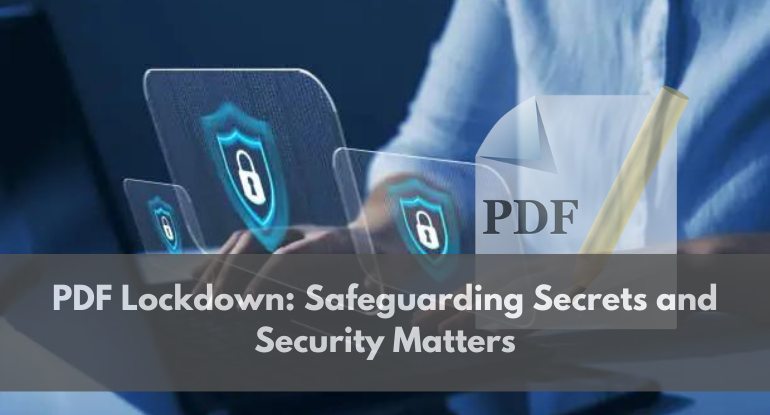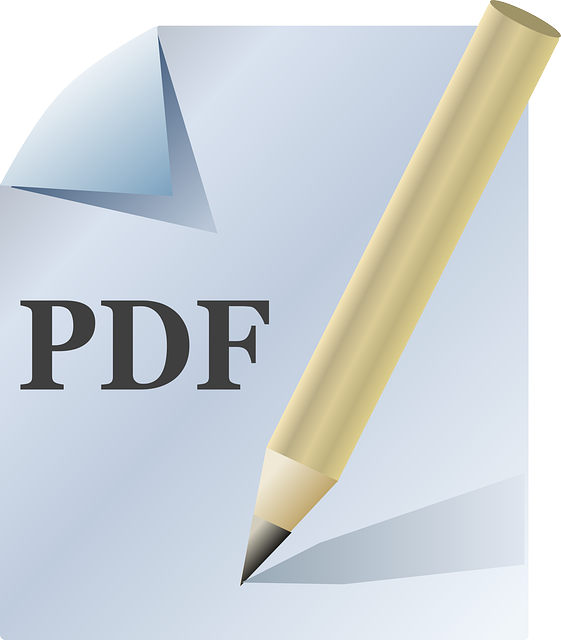
PDF Lockdown: Safeguarding Secrets and Security Matters
In an increasingly digital world, the importance of safeguarding sensitive information and maintaining security cannot be overstated. One crucial aspect of this is securing digital documents, especially in the ubiquitous Portable Document Format (PDF).
PDFs are widely used for sharing and storing various types of information, ranging from personal data to corporate secrets.
Implementing effective measures to lock down PDFs is essential to prevent unauthorized access and protect valuable information.
In this blog post we will delve into the importance and methods of safeguarding PDFs files.
Importance of PDF Security

PDFs have emerged as a ubiquitous choice for document sharing, owing to their inherent versatility, cross-platform compatibility, and steadfast formatting. Despite these advantageous traits, these very characteristics render them susceptible to unauthorized access and distribution.
Therefore, prioritizing PDF security is of utmost importance in order to uphold confidentiality and integrity, especially when dealing with sensitive documents like legal contracts, financial statements, medical records, and intellectual property.
#1. Versatility and Cross-Platform Compatibility: PDFs are known for their versatility, allowing users to integrate various types of content—text, images, graphics, and more—into a single document.
Furthermore, they maintain consistency across different platforms and devices, ensuring that the document's layout and formatting remain intact regardless of the system or software being used.
However, this universal adaptability also makes PDFs an attractive target for malicious intent, highlighting the critical need for robust security measures.
#2. Consistent Formatting: The consistent formatting of PDFs is a significant advantage, ensuring that the document's appearance remains the same across diverse devices and applications. This uniformity is essential, particularly in professional settings where visual consistency is vital for effective communication.
However, it also means that any alterations or unauthorized changes to the PDF can be glaring and damaging, underlining the importance of safeguarding against unauthorized access.
#3. Protection of Sensitive Documents: Sensitive documents, such as legal contracts, financial statements, medical records, and intellectual property, often find their home in PDFs. These documents contain confidential information critical to individuals and organizations.
Maintaining the security of such data is a legal and ethical responsibility, with potential legal repercussions and reputational damage if security is compromised. Therefore, implementing robust security measures for PDFs becomes a necessity to ensure the confidentiality, privacy, and protection of sensitive information.
#4. Legal and Compliance Requirements: In numerous industries, compliance with legal regulations and industry standards is mandatory. For instance, sectors like healthcare and finance are heavily regulated, necessitating stringent security measures to protect sensitive data.
Failure to comply with these regulations can result in severe penalties, fines, or legal action. Securing PDFs is a fundamental step towards adhering to these legal requirements and safeguarding against potential legal consequences.
Methods of PDF Lockdown
Securing PDF documents is of paramount importance to protect sensitive information and maintain data integrity.
Various methods can be employed to effectively lockdown PDFs, ensuring that only authorized users have access and maintaining the confidentiality of the content:
#1. Password Protection: Password protection is a foundational method to secure PDFs. Assigning a robust password restricts access to individuals with authorized credentials. It's crucial to create complex passwords using a combination of letters, numbers, and special characters to enhance security.
#2. Encryption: PDF encryption involves encoding the content of the document, making it unreadable to unauthorized users. The Advanced Encryption Standard (AES) is a widely accepted algorithm for PDF encryption.
By utilizing encryption, even if unauthorized users gain access to the file, they cannot decipher its contents, ensuring data privacy.
#3. Watermarking: Watermarking adds an extra layer of security by placing marks on the PDF, aiding in identifying authorized users and discouraging unauthorized sharing.
Watermarks can be visible or invisible, containing information such as user identification or the purpose of the document. This helps track the document's usage and acts as a deterrent against unauthorized distribution.
#4. Access Control: Implementing access control mechanisms within the PDF allows the document owner to define specific actions that authorized users can perform, such as viewing, printing, editing, or copying the content.
This fine-grained control ensures that only authorized actions are executed, enhancing document security.
#5. Digital Signatures: Digital signatures are crucial for validating the authenticity and integrity of a PDF document. They confirm the identity of the signer and detect any alterations to the document.
Digital signatures assure that the document hasn't been tampered with and originates from a trusted source, instilling trust in the document's content and source.
Best Practices for PDF Lockdown

PDF security is paramount for safeguarding valuable and sensitive information. Employing robust security measures ensures that unauthorized access and distribution are prevented, maintaining data integrity and confidentiality. Here are some best practices for effectively locking down PDFs:
#1. Use Strong Passwords: Utilize strong, complex passwords that include a mix of uppercase and lowercase letters, numbers, and special characters.
Ensure that passwords are unique for each PDF and avoid easily guessable combinations. Regularly update passwords to enhance security.
#2. Regular Encryption: Encrypt PDFs using strong encryption algorithms, such as AES (Advanced Encryption Standard).
Encryption scrambles the content, making it unreadable without the appropriate decryption key. Safeguard encryption keys securely to prevent unauthorized decryption.
#3. Educate Users: Conduct comprehensive training sessions to educate users about the significance of PDF security and best practices to maintain it.
Teach them how to set strong passwords, encrypt PDFs, and securely share and store these documents. Awareness is key to preventing security breaches.
#4. Regular Audits: Perform periodic security audits to evaluate the effectiveness of existing security measures and ensure compliance with organizational security policies.
These audits help identify potential vulnerabilities, policy violations, or areas that require improvement.
#5. Update Security Measures: Stay informed about the latest advancements in PDF security technologies and methodologies. Regularly update security measures and tools to align with the evolving threat landscape.
Implement patches, updates, and new security features promptly to address any emerging vulnerabilities.
#6. Restrict Permissions: Utilize PDF security features to restrict permissions based on user roles and responsibilities. Set access controls such as limiting printing, editing, copying, or forwarding to authorized individuals only. Tailor permissions to match specific security requirements.
#7. Implement Digital Signatures: Incorporate digital signatures to validate the authenticity and integrity of the PDF documents. Digital signatures provide a way to confirm that the document has not been altered since it was signed and that it originates from a trusted source.
#8. Secure File Storage and Sharing: Encourage secure file storage and sharing practices. Use secure, encrypted file-sharing platforms and instruct users to avoid sharing sensitive PDFs via unsecured channels like email or unencrypted cloud storage.
#9. Monitor Access and Usage: Implement monitoring mechanisms to track and log access to PDF documents. Establish protocols to review and analyze access logs regularly to detect any suspicious activities or unauthorized attempts.
10. Backup and Disaster Recovery: Implement regular backups of PDF documents and their associated encryption keys. Establish a robust disaster recovery plan to ensure quick restoration of PDFs in the event of accidental loss, corruption, or security incidents.
Conclusion
Securing PDFs is vital to protect sensitive information and maintain the trust of stakeholders. Employ a combination of password protection, encryption, watermarking, access control, and digital signatures to achieve comprehensive PDF lockdown and mitigate security risks effectively.